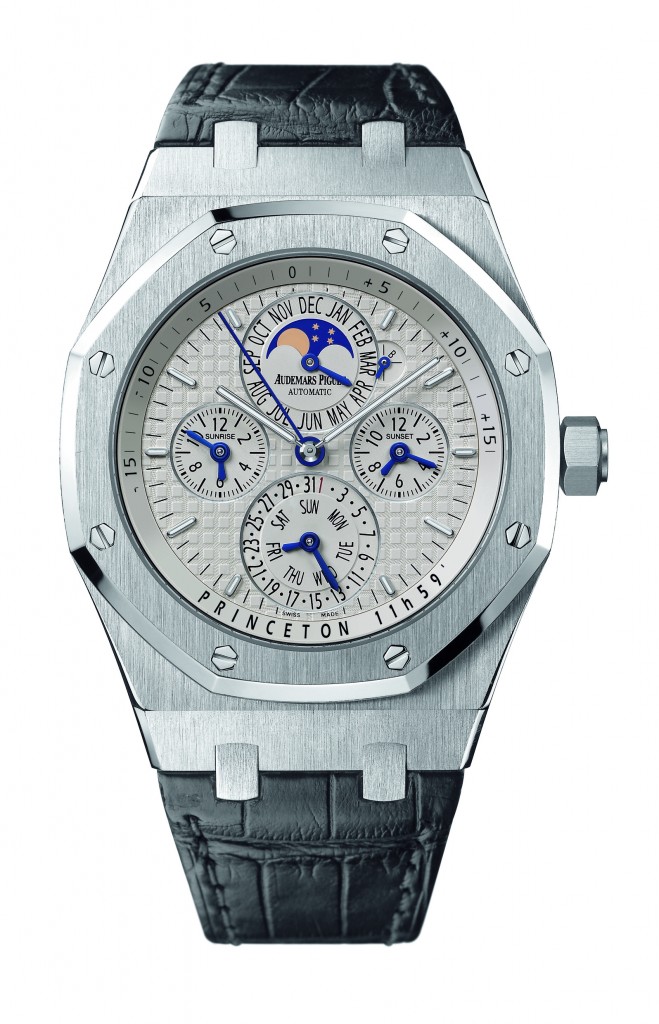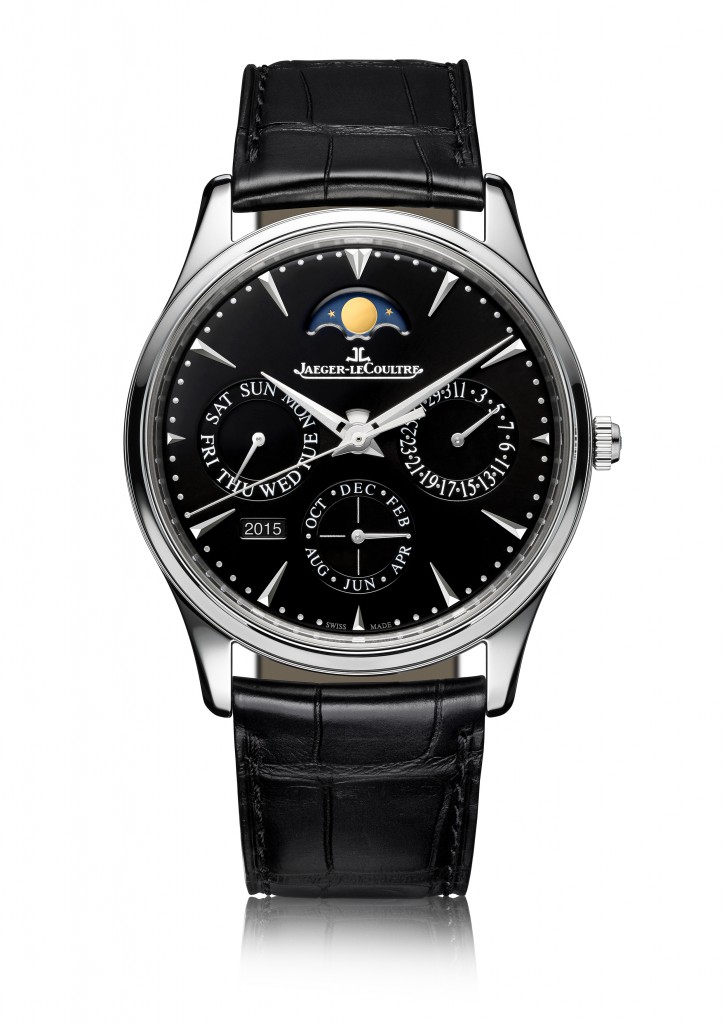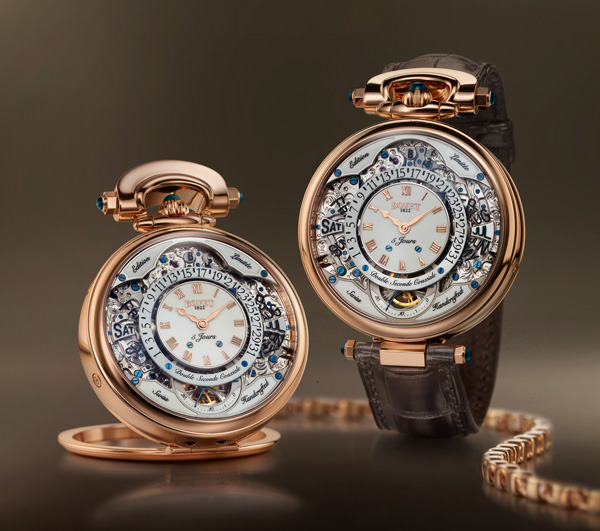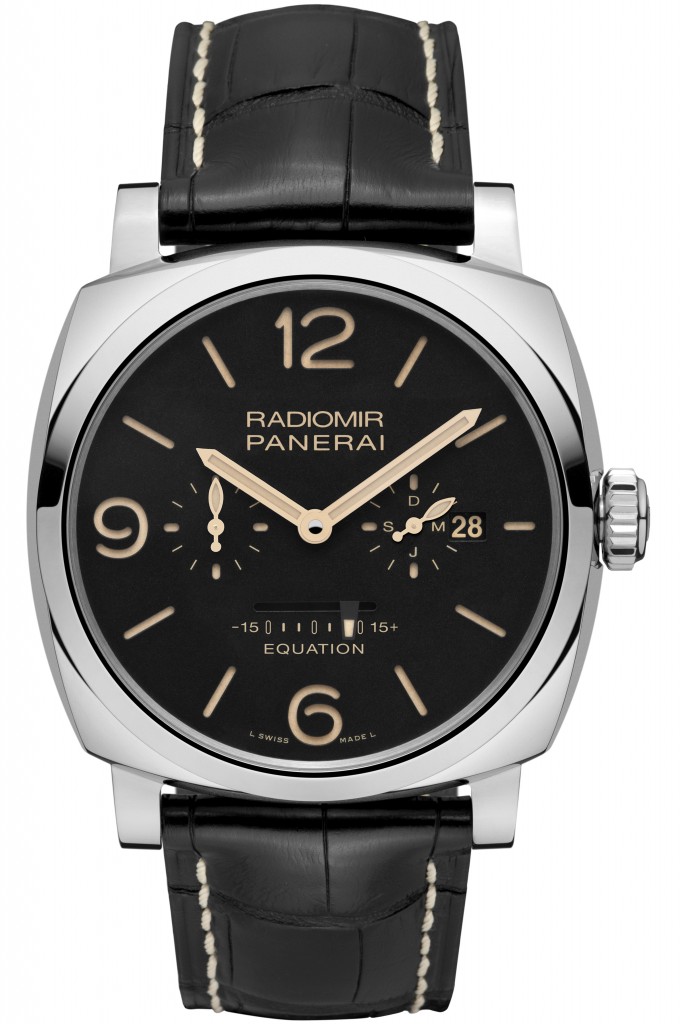
Audemars Piguet Royal Oak Equation of Time ($69,200) watch. It is powered by the Caliber 2120/2802 Manufacture made movement with 425 parts. It offers equation of time, sunrise and sunset times, perpetual calendar, astronomical moon and hours/minutes.
Today is February 29th—a day that comes around only once every four years. Called Leap Year, the year with the extra day in it has a special meaning. While to some it may be reverse day (women, you can ask that man to marry you today), and to others it may be an extra day to just celebrate life, the reality is that the extra day only happens so that we can be more in keeping with the true solar time.
It takes the Earth approximately 365.242189 days – or 365 days, 5 hours, 48 minutes, and 45 seconds – to circle once around the Sun. But the Gregorian calendar – created to offer trackable days of equal length — consists of only 365 days in a year, so if we didn’t add a leap day on February 29 nearly every four years, we would lose almost six hours off our calendar every year. After only 25 years, our calendar would be off by around 6 days.
By adding a day once every four years to our Gregorian calendar, we keep our measured time in alignment with the Earth’s revolutions around the sun. This extra day is added every four years to our calendar until the year 2100—when we will need to skip the leap year to get the timing in sync again.

The new Jaeger-LeCoultre Master Ultra Thin Perpetual watch is powered by the
Jaeger-LeCoultre336-part automatic Caliber 868, and, when cased, the watch measures just 9.2mm in height. It offers indication of year, date, day, month, moon phases, as well as hours, minutes, seconds
With all of this in mind, there are two pretty specific types of watches that can help us measure out days more accurately and even track leap year or true solar time: Perpetual Calendars and Equations of Time.Essentially the perpetual calendar not only tracks day and date (in addition to time), but also counts several other times, including leap year. With a perpetual calendar, the watch mechanism changes the date no matter how many days are in a month, taking into account leap years. Unlike annual calendars that need an annual adjustment, perpetual calendar watches will not need an adjustment until that aforementioned year 2100. Perpetual calendar watches are very complicated to build and so are generally created in limited production.

From Bovet 1822, the Virtuoso VII Retrograde Perpetual Calendar with convertible case shows the leap year cycle integrated into the perpetual calendar that is accurate without adjustments for 400 years.
An Equation of Time watch shows the difference between “true” solar time (nature) and “mean” time (man’s time). True solar time varies from day to today because of the Earth’s orbit and its axis. Mean time ignores the variations of the days and divides the year mathematically into equal hours and equal days. The equation of time watch enables the wearer to view true solar time (in addition to mean time) on the dial. Most watches also display the equation of time – the difference in hours and minutes between mean and solar time – via a running equation wherein in two different hands indicate mean and solar time. The options are varied and offer the true time tracker some great options.






